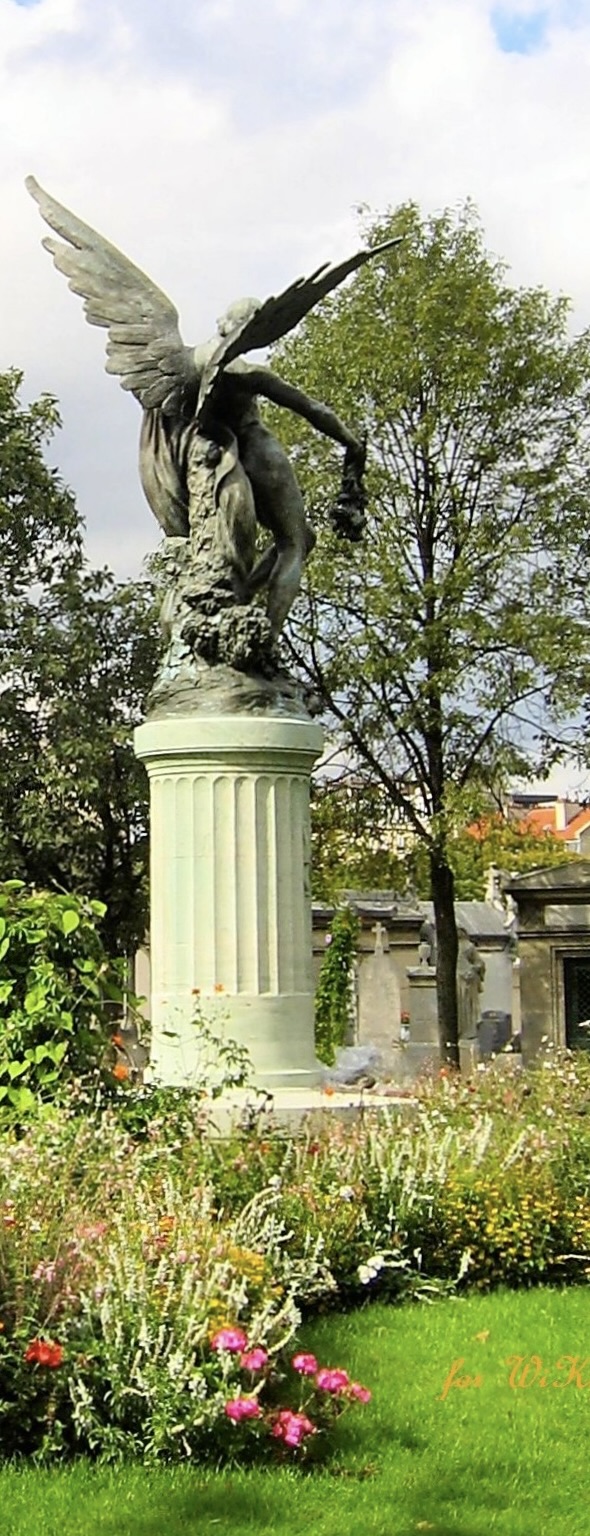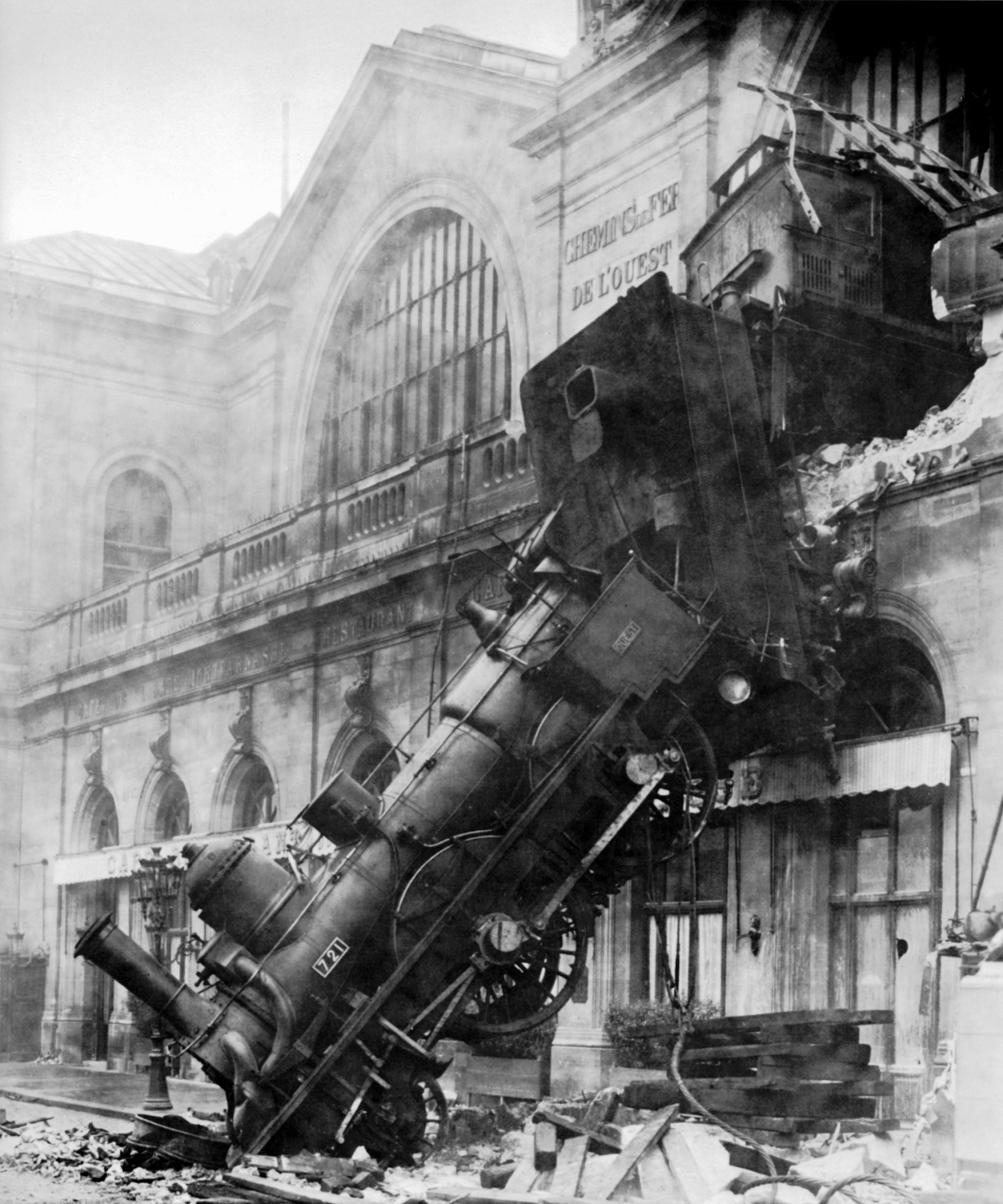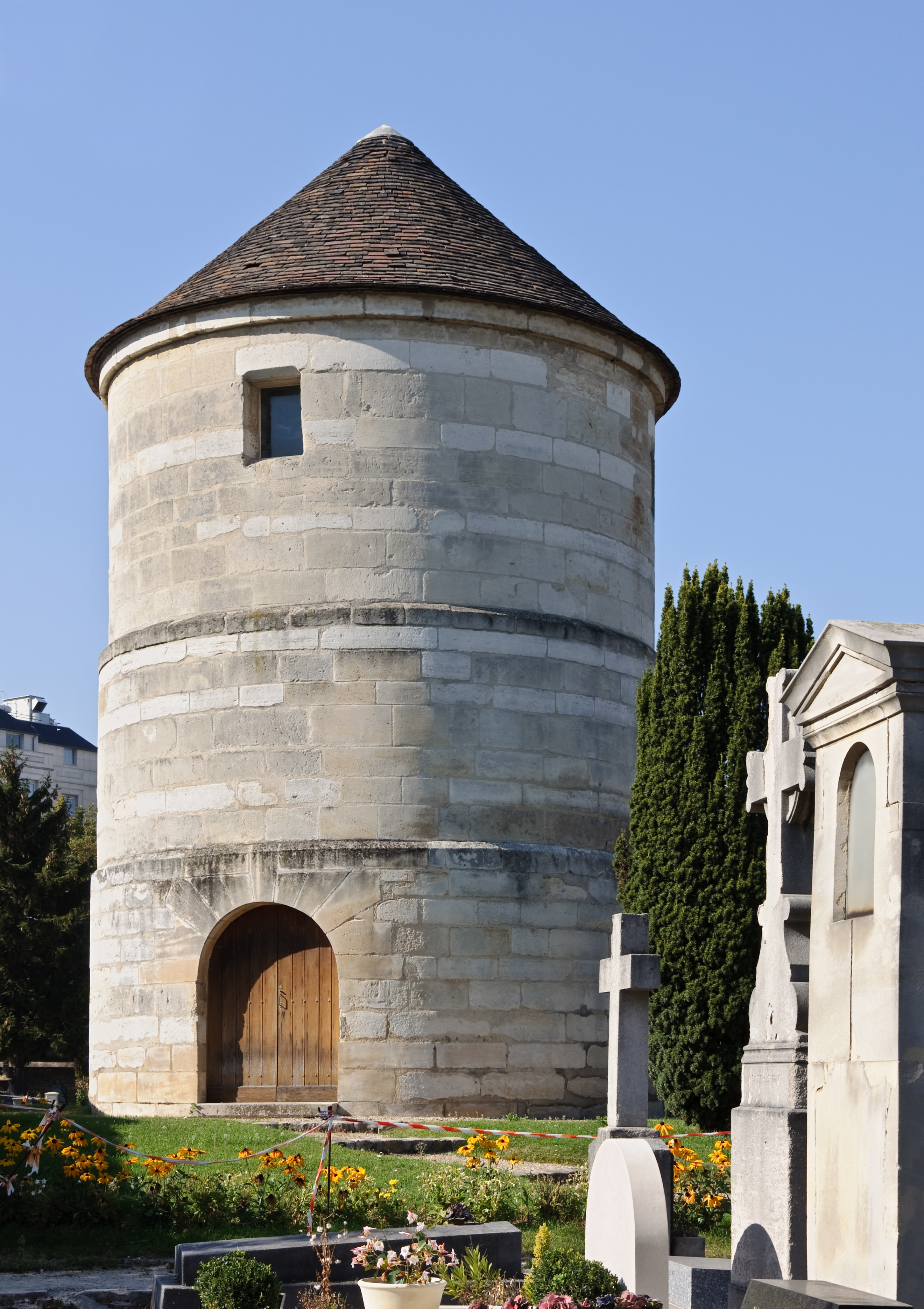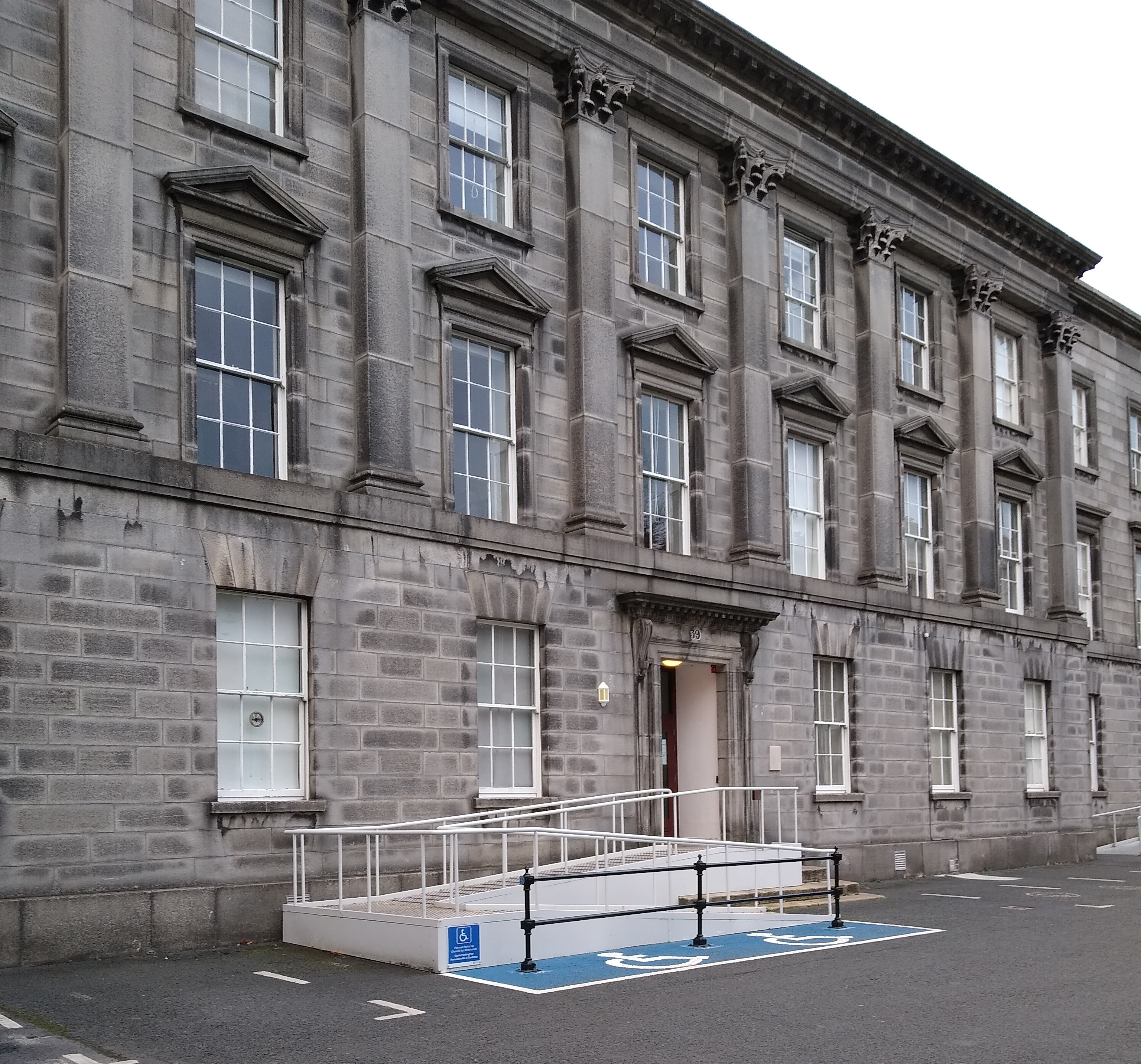|
Montparnasse
Montparnasse () is an area in the south of Paris, France, on the left bank of the river Seine, centred at the crossroads of the Boulevard du Montparnasse and the Rue de Rennes, between the Rue de Rennes and boulevard Raspail. Montparnasse has been part of Paris The area also gives its name to: * Gare Montparnasse: trains to Brittany, TGV to Rennes, Tours, Bordeaux, Le Mans; rebuilt as a modern TGV station; * The large Montparnasse – Bienvenüe métro station; * Cimetière du Montparnasse: the Montparnasse Cemetery, where, among other celebrities, Charles Baudelaire, Constantin Brâncuși, Jean-Paul Sartre, Simone de Beauvoir, Man Ray, Samuel Beckett, Serge Gainsbourg and Susan Sontag are buried; * Tour Montparnasse, a lone skyscraper. The Pasteur Institute is located in the area. Beneath the ground are tunnels of the Catacombs of Paris. Students in the 17th century who came to recite poetry in the hilly neighbourhood nicknamed it after "Mount Parnassus", home to the nin ... [...More Info...] [...Related Items...] OR: [Wikipedia] [Google] [Baidu] |
Tour Montparnasse
Tour Maine-Montparnasse (Maine-Montparnasse Tower), also commonly named Tour Montparnasse, is a office skyscraper located in the Montparnasse area of Paris, France. Constructed from 1969 to 1973, it was the tallest skyscraper in France until 2011, when it was surpassed by the Tour First. It remains the tallest building in Paris outside the La Défense business district. , it is the 14th tallest building in the European Union. The tower was designed by architects Eugène Beaudouin, Urbain Cassan, and Louis Hoym de Marien and built by Campenon Bernard. On 21 September 2017, Nouvelle AOM won a competition to redesign the building's facade. Description Built on top of the Montparnasse–Bienvenüe Paris Métro station, the building has 59 floors. The 56th floor, 200 metres (600') from the ground, is home to Paris Montparnasse, an observation deck owned by Magnicity, a French company which also operates the Berlin TV Tower in Berlin and 360 CHICAGO at the former John Hancock C ... [...More Info...] [...Related Items...] OR: [Wikipedia] [Google] [Baidu] |
Gare Montparnasse
Gare Montparnasse (; Montparnasse station), officially Paris-Montparnasse, one of the six large Paris railway termini, is located in the 14th and 15th arrondissements. The station opened in 1840, was rebuilt in 1852 and relocated in 1969 to a new station just south of the original location – where subsequently the prominent Montparnasse Tower was constructed. It is a central element to the Montparnasse area. The original station is noted for the Montparnasse derailment, where a steam train crashed through the station in 1895, an event captured in widely known photographs – and reproduced in full scale in several locations. The station serves intercity TGV trains to the west and southwest of France including Tours, Bordeaux, Rennes and Nantes, and suburban and regional services on the Transilien Paris – Montparnasse routes. There is also a metro station. Gare Montparnasse is the only mainline terminus in Paris not directly connected to the RER system, though the Mo ... [...More Info...] [...Related Items...] OR: [Wikipedia] [Google] [Baidu] |
Cimetière Du Montparnasse
Montparnasse Cemetery (french: link=no, Cimetière du Montparnasse) is a cemetery in the Montparnasse quarter of Paris, in the city's 14th arrondissement. The cemetery is roughly 47 acres and is the second largest cemetery in Paris. The cemetery has over 35,000 graves and approximately a thousand people are buried here each year. The cemetery contains 35,000 plots and is the resting place to a variety of individuals including political figures, philosophers, artists, actors, and writers. Additionally, in the cemetery one can find a number of tombs commemorating those who died in the Franco-Prussian war during the siege of Paris (1870–1871) and the Paris Commune (1871). History The cemetery was created at the beginning of the 19th century in the southern part of the city. At the same time there were cemeteries outside the city limits: Passy Cemetery to the west, Montmartre Cemetery to the north, and Père Lachaise Cemetery to the east. In the 16th century the intersecting road ... [...More Info...] [...Related Items...] OR: [Wikipedia] [Google] [Baidu] |
Boulevard Du Montparnasse
The Boulevard du Montparnasse is a two-way boulevard in Montparnasse, in the 6th, 14th and 15th arrondissements in Paris. Situation The boulevard joins the place Léon Paul Fargue and place Camille Jullian. The Tour Montparnasse and place du 18 juin 1940 also found along it. See also *Cimetière du Montparnasse *Gare Montparnasse Gare Montparnasse (; Montparnasse station), officially Paris-Montparnasse, one of the six large Paris railway termini, is located in the 14th and 15th arrondissements. The station opened in 1840, was rebuilt in 1852 and relocated in 1969 to ... Montparnasse Montparnasse Montparnasse Montparnasse {{Paris-road-stub ... [...More Info...] [...Related Items...] OR: [Wikipedia] [Google] [Baidu] |
Paris
Paris () is the capital and most populous city of France, with an estimated population of 2,165,423 residents in 2019 in an area of more than 105 km² (41 sq mi), making it the 30th most densely populated city in the world in 2020. Since the 17th century, Paris has been one of the world's major centres of finance, diplomacy, commerce, fashion, gastronomy, and science. For its leading role in the arts and sciences, as well as its very early system of street lighting, in the 19th century it became known as "the City of Light". Like London, prior to the Second World War, it was also sometimes called the capital of the world. The City of Paris is the centre of the Île-de-France region, or Paris Region, with an estimated population of 12,262,544 in 2019, or about 19% of the population of France, making the region France's primate city. The Paris Region had a GDP of €739 billion ($743 billion) in 2019, which is the highest in Europe. According to the Economist Intelli ... [...More Info...] [...Related Items...] OR: [Wikipedia] [Google] [Baidu] |
Man Ray
Man Ray (born Emmanuel Radnitzky; August 27, 1890 – November 18, 1976) was an American visual artist who spent most of his career in Paris. He was a significant contributor to the Dada and Surrealism, Surrealist movements, although his ties to each were informal. He produced major works in a variety of List of artistic media, media but considered himself a painter above all. He was best known for his pioneering photography, and was a renowned fashion photography, fashion and portrait photographer. He is also noted for his work with photograms, which he called "rayographs" in reference to himself. Biography Background and early life During his career, Man Ray allowed few details of his early life or family background to be known to the public. He even refused to acknowledge that he ever had a name other than Man Ray.Neil Baldwin (writer), Baldwin, Neil. ''Man Ray: American Artist''; Da Capo Press; (1988, 2000) Man Ray's birth name was Emmanuel Radnitzky. He was born in ... [...More Info...] [...Related Items...] OR: [Wikipedia] [Google] [Baidu] |
Jean-Paul Sartre
Jean-Paul Charles Aymard Sartre (, ; ; 21 June 1905 – 15 April 1980) was one of the key figures in the philosophy of existentialism (and phenomenology), a French playwright, novelist, screenwriter, political activist, biographer, and literary critic, as well as a leading figure in 20th-century French philosophy and Marxism. His work has influenced sociology, critical theory, post-colonial theory, and literary studies, and continues to do so. He was awarded the 1964 Nobel Prize in Literature despite attempting to refuse it, saying that he always declined official honors and that "a writer should not allow himself to be turned into an institution." Sartre held an open relationship with prominent feminist and fellow existentialist philosopher Simone de Beauvoir. Together, Sartre and de Beauvoir challenged the cultural and social assumptions and expectations of their upbringings, which they considered bourgeois, in both lifestyles and thought. The conflict between oppressive, ... [...More Info...] [...Related Items...] OR: [Wikipedia] [Google] [Baidu] |
Montparnasse - Bienvenüe (Paris Métro)
''Montparnasse Bienvenue'' (french: Jeune Femme, lit=Young Woman) is a 2017 French comedy-drama film written and directed by Léonor Serraille. It was screened in the Un Certain Regard section at the 70th Cannes Film Festival and won the Caméra d'Or (for Léonor Sérraille). The film stars Lætitia Dosch as Paula, a woman recently returned to Paris after years living abroad, who is forced to forge a new life for herself after being abruptly dumped by her wealthy boyfriend. Plot After her wealthy boyfriend Joachim locks her out of their shared apartment, Paula screams to be let back in and is taken to a mental ward. Escaping the ward she returns to Joachim's apartment and discovers he has locked out her cat as well. Having only recently returned from years abroad in Mexico, Paula has no job and few friends. After quickly exhausting what little money she has, and angering her friends, she turns to the mother she ran away from years earlier, only to be quickly rejected. Whil ... [...More Info...] [...Related Items...] OR: [Wikipedia] [Google] [Baidu] |
Paris Métro
The Paris Métro (french: Métro de Paris ; short for Métropolitain ) is a rapid transit system in the Paris metropolitan area, France. A symbol of the Paris, city, it is known for its density within the capital's territorial limits, uniform architecture and Paris Métro entrances by Hector Guimard, unique entrances influenced by Art Nouveau. It is mostly underground and long. It has 308 stations, of which 64 have transfers between lines. The Montmartre funicular is considered to be part of the metro system, within which is represented by a 303rd fictive station "Funiculaire". There are 16 lines (with an additional four Grand Paris Express, under construction), numbered 1 to 14, with two lines, Paris Métro Line 3bis, 3bis and Paris Métro Line 7bis, 7bis, named because they started out as branches of Paris Métro Line 3, Line 3 and Paris Métro Line 7, Line 7 respectively. Paris Métro Line 1, Line 1 and Paris Métro Line 14, Line 14 are List of automated train systems, automat ... [...More Info...] [...Related Items...] OR: [Wikipedia] [Google] [Baidu] |
Samuel Beckett
Samuel Barclay Beckett (; 13 April 1906 – 22 December 1989) was an Irish novelist, dramatist, short story writer, theatre director, poet, and literary translator. His literary and theatrical work features bleak, impersonal and tragicomic experiences of life, often coupled with black comedy and nonsense. It became increasingly minimalist as his career progressed, involving more aesthetic and linguistic experimentation, with techniques of repetition and self-reference. He is considered one of the last modernist writers, and one of the key figures in what Martin Esslin called the Theatre of the Absurd. A resident of Paris for most of his adult life, Beckett wrote in both French and English. During the Second World War, Beckett was a member of the French Resistance group Gloria SMH (Réseau Gloria). Beckett was awarded the 1969 Nobel Prize in Literature "for his writing, which—in new forms for the novel and drama—in the destitution of modern man acquires its elevation". He ... [...More Info...] [...Related Items...] OR: [Wikipedia] [Google] [Baidu] |
Simone De Beauvoir
Simone Lucie Ernestine Marie Bertrand de Beauvoir (, ; ; 9 January 1908 – 14 April 1986) was a French existentialist philosopher, writer, social theorist, and feminist activist. Though she did not consider herself a philosopher, and even though she was not considered one at the time of her death, she had a significant influence on both feminist existentialism and feminist theory. Beauvoir wrote novels, essays, biographies, autobiographies, and monographs on philosophy, politics, and social issues. She was known for her 1949 treatise ''The Second Sex'', a detailed analysis of women's oppression and a foundational tract of contemporary feminism; and for her novels, including ''She Came to Stay'' (1943) and '' The Mandarins'' (1954). Her most enduring contribution to literature is her memoirs, notably the first volume, "Mémoires d'une jeune fille rangée" (1958), which has a warmth and descriptive power. She won the 1954 Prix Goncourt, the 1975 Jerusalem Prize, and the 1978 ... [...More Info...] [...Related Items...] OR: [Wikipedia] [Google] [Baidu] |
Charles Baudelaire
Charles Pierre Baudelaire (, ; ; 9 April 1821 – 31 August 1867) was a French poetry, French poet who also produced notable work as an essayist and art critic. His poems exhibit mastery in the handling of rhyme and rhythm, contain an exoticism inherited from Romantics, but are based on observations of real life. His most famous work, a book of lyric poetry titled ''Les Fleurs du mal'' (''The Flowers of Evil''), expresses the changing nature of beauty in the rapidly industrializing Paris during the mid-19th century. Baudelaire's highly original style of prose-poetry influenced a whole generation of poets including Paul Verlaine, Arthur Rimbaud and Stéphane Mallarmé, among many others. He is credited with coining the term modernity (''modernité'') to designate the fleeting, ephemeral experience of life in an urban metropolis, and the responsibility of artistic expression to capture that experience. Marshall Berman has credited Baudelaire as being the first Modernism, Modernis ... [...More Info...] [...Related Items...] OR: [Wikipedia] [Google] [Baidu] |









